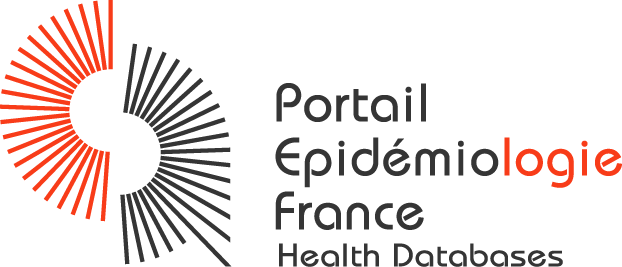 ITMO public health
ITMO public health


Last update : 01/01/2020 | Version : 1 | ID : 1025
| General | |
| Identification | |
| Detailed name | Health barometer |
| General Aspects | |
| Medical area |
Disability/handicap Infectious diseases Psychology and psychiatry |
| Study in connection with Covid-19 |
No |
| Health determinants |
Addictions Lifestyle and behavior Occupation Social and psychosocial factors |
| Others (details) | Chronic diseases |
| Keywords | Vaccination, sexuality, life quality, aging, pathological gambling, psychotropic medication, pain, internet and health, health care, screening, alcohol, tobacco, cannabis, drugs, mental health, suicide, sleep, contraception, accidents, Alzheimer, violence |
| Scientific investigator(s) (Contact) | |
| Name of the director | BECK |
| Surname | François |
| Address | 42, boulevard de la Libération |
| Phone | +33 (0)1 49 33 22 22 |
| pierre.arwidson@inpes.sante.fr | |
| Organization | INPES - Institut National de la Prévention et d'Éducation pour la |
| Collaborations | |
| Funding | |
| Funding status |
Public |
| Details | Ministère chargé de la santé CNAMTS |
| Governance of the database | |
| Sponsor(s) or organisation(s) responsible | INPES |
| Organisation status |
Public |
| Additional contact | |
| Main features | |
| Type of database | |
| Type of database |
Study databases |
| Study databases (details) |
Repeated cross-sectional studies (except case control studies) |
| Database recruitment is carried out by an intermediary |
An administrative base or a register |
| Database recruitment is carried out as part of an interventional study |
No |
| Additional information regarding sample selection. |
Two-level survey (household, then individual) Random selection from the France Telecom directory. Sending a letter before the call (if the address is available, otherwise is sent later) Selection of the individuals according to anniversary method until 2005, and according to Kish method until 2010. People registered in red lists and people reachable only by mobile phone participate to the survey. Call distribution in 2010: Fixed telephone line: 80 to 85% Only mobile phone: 13 to 15% Full unbundled access: 3 to 5% |
| Database objective | |
| Main objective |
Follow the evolution of some basic indicators about behavior and attitudes towards health on general population. Follow the evolution by age group, gender, sub-populations… according to the large size of the sample. Feed the different INPES information programs concerning behaviors, opinion and attitudes towards health as well as determinants (associates factors) of these opinions. Study, thanks to the large size of the sample, sub-populations specificities (young people, old people, students, unemployed people) and unusual behaviors. Study the links between representations and behaviors concerning health (the difference between barometers and other health surveys is that they are surveys about prevention practices and lifestyles concerning health factors. There is no attempt to measure exactly health conditions. A relevant part of the questionnaire concerns sensitive topics such as addictions, mental health, sexual behaviors, etc.) Being complementary to other big health surveys (avoid repetition, research coherence), in a collaborative effort. Participate, thanks to the large size of the base, to the production of regional data, in collaboration with the ORS. In the dimension study/observation, it will also be a point of support for the evaluation of public politics: indicators of the follow of Public Health laws, assessment of government plans (addictions plan, mental health plan, ageing well…) |
| Inclusion criteria |
Question people belonging to households: - Equipped with a fixed telephone line (white, orange or red list) - Equipped with just a mobile phone - Full unbundled access |
| Population type | |
| Age |
Adolescence (13 to 18 years) Adulthood (19 to 24 years) Adulthood (25 to 44 years) Adulthood (45 to 64 years) Elderly (65 to 79 years) Great age (80 years and more) |
| Population covered |
General population |
| Gender |
Male Woman |
| Geography area |
National |
| Detail of the geography area | Metropolitan France |
| Data collection | |
| Dates | |
| Date of first collection (YYYY or MM/YYYY) | 1992 |
| Date of last collection (YYYY or MM/YYYY) | 2010 |
| Size of the database | |
| Size of the database (number of individuals) |
Greater than 20 000 individuals |
| Details of the number of individuals | Sample size 1992 2099 1993 1950 1995 1993 1997 4115 young people 2000 13 685 (+ 5 regional samples) 2005 30 514 (+7 regional samples) 2010 27 653 (+ 10 regional samples) Age: 18 to 75 years for 1992 1993 1995 barometers 12 to 19 years for 1997 barometers 12 to 75 years for 2000 et 2005 barometers 15 to 85 years for 2010 barometers |
| Data | |
| Database activity |
Data collection completed |
| Type of data collected |
Declarative data |
| Declarative data (detail) |
Paper self-questionnaire Phone interview |
| Presence of a biobank |
No |
| Health parameters studied |
Health event/morbidity Health care consumption and services Quality of life/health perception Others |
| Care consumption (detail) |
Hospitalization Medical/paramedical consultation Medicines consumption |
| Other (detail) | Prevention (behaviors, screening), health and social inequalities |
| Procedures | |
| Data collection method | Data collection by phone with a web survey complement in 2010 |
| Classifications used | Duke inventory (health quality) CIDI -SF (depression) Cannabis Abuse Screening test (CAST): problem cannabis use AUDIT (problem alcohol use) fagerström (tobacco addiction) Healthy days (health quality) MH5 (SF36- mental health): (mental health dimensions of a life quality scale) |
| Participant monitoring |
No |
| Links to administrative sources |
No |
| Promotion and access | |
| Promotion | |
| Link to the document | http://www.inpes.sante.fr/Barometres/barometre-sante-2010/index.asp |
| Access | |
| Terms of data access (charter for data provision, format of data, availability delay) |
INPES publish presentations of the results of the surveys, as well as a 4-pages synopsis. Publication of abstracts and articles in scientific magazines. Full online publication. Data diffusion depending on the convention once the work published |
| Access to aggregated data |
Access on specific project only |
| Access to individual data |
Access on specific project only |
Partners - FAQ - Contact - Site map - Legal notices - Administration - Updated on December 15 2020 - Version 4.10.05